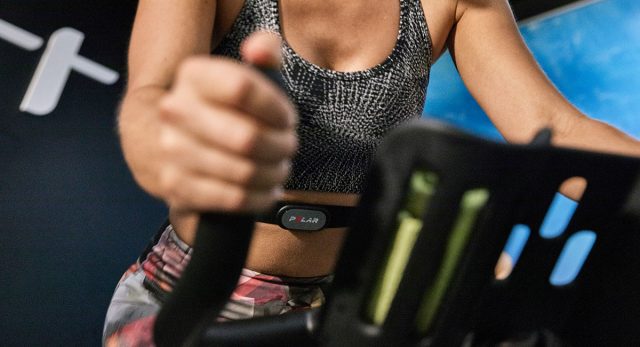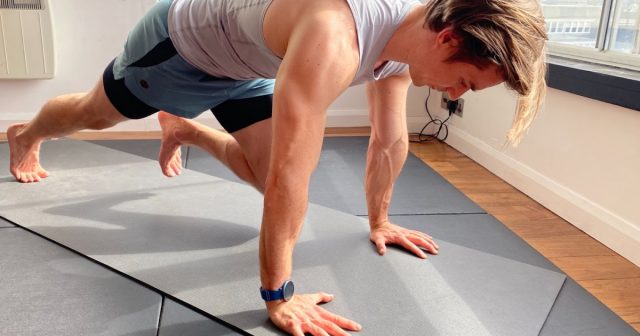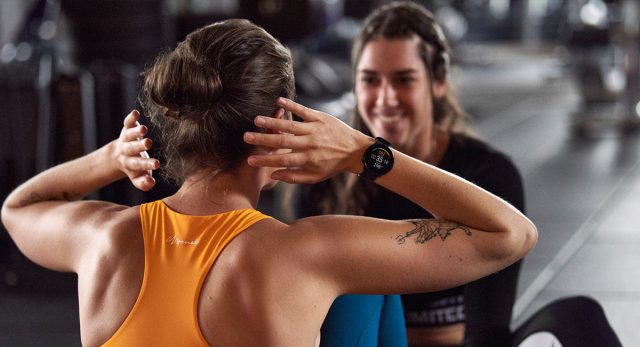If we’re lucky enough to have found our sporting passion, then chances are we exercise for the sheer joy of it. We do our chosen sport because it’s our thing, our way of life – it’s fun and makes us feel awesome!
In addition to the feel-good factors, most of us have specific sports and fitness goals that we want to achieve; be it weight loss, gaining strength, or boosting endurance. But how do we know if we’re hitting those goals or even headed in the right direction?
Two indicators of exercise intensity
It’s important that you listen to your body.
Exercise intensity is a measure of how straining a physical activity is for you – it’s always personal. This means the exertion from the same exercise may be completely different depending on the individual. What feels to you like a tough workout may feel like an easy walk in the park to someone who’s more fit.
There are two ways of determining exercise intensity: your subjective feeling and a physiological measure – your heart rate.
The first and most simple indicator of exercise intensity is how you feel during exercise – so it’s important that you listen to your body. Although based on subjective assessment, studies show that the perceived level of intensity compares well with heart rate – if you feel that you’re working hard, your heart rate is likely high.
The most accurate way to gauge the intensity of your workouts is monitoring your heart rate.
The most accurate way to gauge the intensity of your workouts is by monitoring your heart rate. It’s important to pay attention to your subjective feeling, but the most reliable and comparable measurement of exercise intensity is heart rate data. Your heart rate takes into account your body status and readiness. It’s mainly physiological but is affected by mental aspects, too.
WHY MONITOR HEART RATE?
Monitoring your heart rate is key in making sure that you exercise at all the intensity levels and have enough variation in your routine. The benefit of heart rate monitoring is that you can track if your workouts stay at the intensity level you planned: you will better manage to maintain a light effort throughout your workout or reach the peaks in interval training. Monitoring your heart rate means you will know, instead of just guessing by the way you feel.
As your fitness improves, your heart rate will lower. You may notice that the same heart rate allows you to run or cycle faster than before. These are clear signs that your fitness level and body capacity have improved.
To improve your fitness you need to vary the intensity of your workouts. This means you need to train on different heart rate zones, which you can target to show the full range of training possibilities.
HOW TO START MONITORING HEART RATE
There are multiple ways to monitor your heart rate. You can check your pulse (on your wrist or neck) or you can use a stethoscope to hear your heart beat. Meausre your heart rate for 15 seconds then multply this value by four to calculate an estimation of your heart rate.
For a technically accurate measurement, use a chest strap with a heart rate sensor or a fitness watch with wrist-based heart rate tracking. No need to stop and check your pulse – your device will monitoring your heart rate for you.
how to use heart Rate data to adjust exercise intensity
The intensity level of exercise (together with duration and frequency) determines how effective your training is. If you want your workouts to be effective (in addition to being fun), you’ll need to know if the intensity of your training session was what you planned.
To improve your fitness, it’s crucial to not only monitor if you’re doing enough but also to make sure you don’t overtrain. As counterproductive as it sounds, if your training is too intense or repetitive with no variation, it can, in fact, hamper your performance and/or put you at risk of injury.
To improve your fitness, it’s crucial to not only monitor if you’re doing enough but also to make sure you don’t overtrain.
Especially if you rigidly focus on one thing and one thing only – it’s rarely enough.
You can overdo any form of exercise, even something as simple and seemingly low effort as walking – walk too much, too often, while ignoring strength training and stretching, and you may soon find yourself with lower back pain, aching hip joints, inflamed Achilles tendons or knee problems.
Specific goals or not, it’s key for everyone to find that sweet spot where you’re exercising enough, at the right intensity without overdoing it.
Using your Polar product, you can adjust exercise intensity by creating training targets with Polar Flow. This means your heart rate data can be used to ensure you are receiving a balance of training.
is high-intensity exercise better than low-intensity workouts?
A high heart rate improves your aerobic fitness but is physiologically demanding to your body and its functions – the more you train with high intensity, the more time you need to recover. This means you can’t and shouldn’t do high-intensity training every day or, depending on your fitness level, not even every other day.
Too much training at high intensity increases the risk of injuries.
For most regular exercisers, focussing on high-intensity training two or three times a week is enough. The reason you shouldn’t overdo it, even if you want to challenge yourself, is that too much training at a high intensity increases the risk of injuries.
Even if you don’t end up with a physical injury, overdoing high-intensity training for too long will result in a deficit in hormonal and metabolic functions and you may lose your appetite, become irritated, sleepy, or have disturbed sleep at night. This phenomenon is known as the overtraining syndrome, which can put a full stop to your training altogether
On the other hand, training only at a low intensity doesn’t take you forward or improve your fitness. That’s why you need the variation.
Low-intensity sessions are good for both recovery and supportive training to improve your mobility, such as stretching, yoga, or pilates.
Training at low intensity maintains bodily functions and prevents many metabolic disorders. It consumes calories, but little compared to moderate or higher intensities.
Low-intensity sessions are good for both recovery and supportive training to improve your mobility, such as stretching, yoga, or pilates.
How to use a heart rate monitor in different types of exercise
Monitoring your heart rate is an excellent way to help you work out in a specific heart rate zone and vary your training intensity.
If you track your heart rate when walking or cycling, you’ll see it will be around 50-60% of your Maximum Heart Rate (zone one) while a low-key cardio workout or an easy jog will push you up into 60-70% (zone two).
The type of exercises in zone three is where you start to transition into aerobic intensity. Here your heart rate will be around 70-80% as you start to break a sweat with a pacy 10k run. Want to push yourself to your max? Try lifting weights, sprinting or HIIT training to monitor your heart rate in zones four and five.
how vary your training intensity
Selecting a variety of training with high, moderate, and light is the best way to go. Light intensity allows you to recover or build base, moderate to improve, and high intensity to peak your fitness.
Selecting a variety of training with high, moderate, and light is the best way to go.
The amount of different intensities depends on your fitness level. If you’re highly fit and exercise frequently, you can do two to three high-intensity training sessions a week (but not on consecutive days) and complete your program with two moderate and one or two light sessions weekly.
If you work out three times a week, select one high and two moderate training sessions or one of each (high, moderate, and light).
These are only general guidelines to point you in the right direction. If you want to set specific personal goals, you can create training targets with Polar Flow, sync the targets with your sports watch or fitness tracker and your Polar product will guide you during your training.
If you liked this post, don’t forget to share so that others can find it, too.
Or give it a thumbs up!
I like this article
Please note that the information provided in the Polar Blog articles cannot replace individual advice from health professionals. Please consult your physician before starting a new fitness program.





